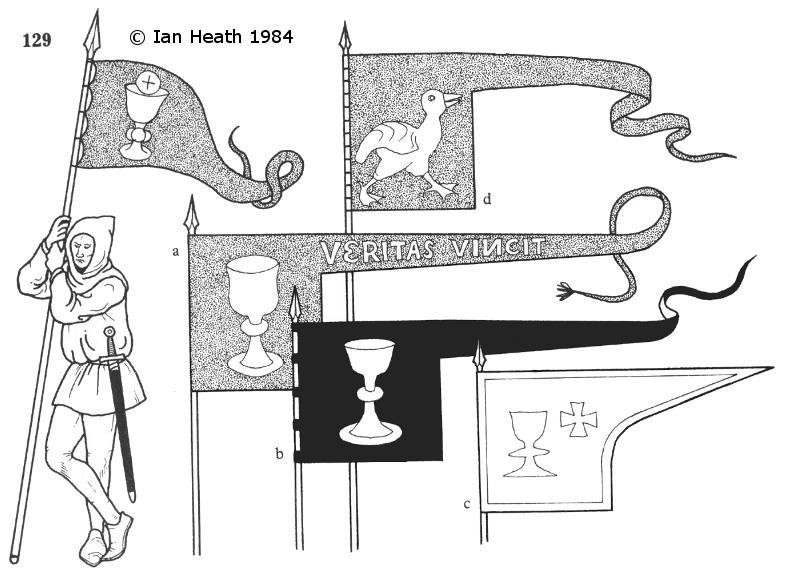
Amazon Audible Gift Memberships
HUSSITE FLAGS
An extract from Armies of the Middle Ages, Volume 2by Ian Heath



129. HUSSITE FLAGS
As explained above, the chalice (kalich) was the symbol of the Hussite movement and it subsequently appeared on the majority of their flags, with or without the wafer. That carried by the main figure here, from the British Museum ms., is red with the chalice in gold and the wafer white, the standard-bearer himself being dressed in a green hood, a light tan tunic and off-white trousers. Judging from other accounts this is an infantry flag, these being described as generally red with a yellow or gold chalice thereon, this figure actually being shown in the original leading a body of flail-armed foot-soldiers. 129a, on the other hand, is a cavalry flag, this time from a Hussite battle-scene in the 'Jena Codex' ms. of c.1500. It is again red, with a gold chalice and inscription plus a blue and yellow tassel at the end of the tailor schwenkel. In a Bohemian source of 1437 flags of this particular shape are called, appropriately enough, 'banners with a long tail'.
129b is one of the signalling flags recommended in a later ordinance (of c. 1450-75) that appears to have been confirming earlier practice. These were flown from the leading wagons on the outside of a Hussite column, being on one flank white with a red chalice on one side and red with a white chalice on the other, and on the opposite flank black with a red chalice and green with a white chalice.
129c shows a variant Hussite flag depicting a cross as well as a chalice, from a Bohemian relief carving of the first half of the 15th century. It appears in addition to have a fringe.
Lastly, 129d depicts another popular Hussite emblem, being a goose, sometimes shown drinking from the chalice. In this particular example the flag is characteristically red, with the goose in white with a yellow beak and yellow webbed feet.